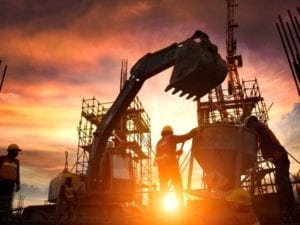Mother Nature is unleashing her fury on the world with increasing regularity and devastation.
A recent report by the World Bank states that the frequency and intensity of extreme weather events has escalated across the African continent. South Africa is not immune to this trend, having to contend with its own share of destruction caused by floods, drought and wildfires. And the events don’t have to be disastrous to be brutal. Even small, isolated weather events can cause widespread damage. It’s time to face up to the fact that natural disasters are going to be a part of our lives for many years to come, says Databuild CEO Morag Evans. “Carrying out crisis management in the wake of these events is simply not good enough. Instead we need a proactive approach geared to mitigating the impacts of climate change, one which can meet the demands and challenges of the future environment and economy we will be living in. “The role of construction in this regard is crucial. The industry is indispensable in protecting us from the elements, including the impact of natural disasters. And while it is true that these events afford many opportunities to construction companies in the form of rebuilding, doing so is becoming increasingly expensive worldwide. It is estimated that in 2020, disasters caused $210 billion worth of damage around the world. This is about a third more than in 2019. “Consequently, industry participants need to work together to improve the resilience of their constructions so that buildings – and their inhabitants – can survive the force of nature when it comes.”While no building is fully immune to natural disaster, Evans says there are numerous measures that can be taken to make infrastructure more climate resilient.
Sustainable building practices that include adaptation, retrofitting and re-use are called for, as well as the utilisation of high-performance building materials and components, and improved construction techniques that offer greater resistance to the elements. Technologies such as building information modelling (BIM) can be used to carry out digital simulations of disaster scenarios such as flooding. Structures can be tested against computer simulations before the construction process commences, which will facilitate the building of safer, sturdier buildings. Self-healing concrete is another relatively new innovation that uses a mixture of bacteria and nutrients to repair itself when cracks occur, making it better able to stand up to nature’s wrath and significantly improving the lifespan of buildings, bridges and roads. Energy and water are precious commodities in South Africa, and architects and specifiers should already be incorporating energy and water supply resiliency into their building designs, Evans continues. Energy resiliency can be achieved through the installation of energy efficient systems such as solar power and solar water heating, while systems that enable the use of greywater and rainwater for toilet flushing and irrigation will significantly enhance water supply resiliency. “Designing and building with resiliency in mind will not only minimise the cost of reconstruction in the event of a natural disaster, but also save irreplaceable lives,” Evans concludes. “Furthermore, construction companies that focus on implementing resilient building practices will reap the financial benefits over the long term.”







